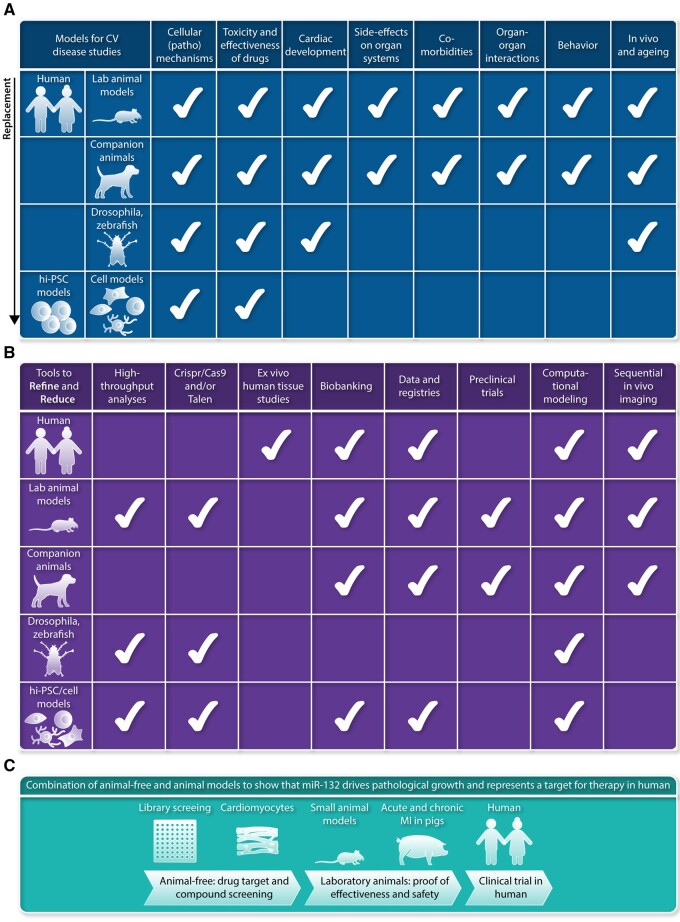Figure 1.
(A) Models that are available for studies on cardiovascular disease, ranging from human and laboratory animals to stem cell-derived models. Aspects that can be measured currently in the different models are indicated with the white check mark. This overview shows that several models allow to reduce the number of studies in laboratory animals, as many initial steps in identification of pathomechansisms, testing drug toxicity and drug effectiveness can be studied in cell-based models. Clearly, studies in human itself offers multiple opportunities to reduce the work in laboratory animals. (B) Multiple tools have been developed in past years to refine and replace studies in the models used for cardiovascular research, and range from tools and expertise to characterize human tissue samples obtained during surgery to models derived from hiPSCs (human induced pluripotent stem cells). (C) Example of an experimental design making use of available complementary research models based on the 3R principles.2

